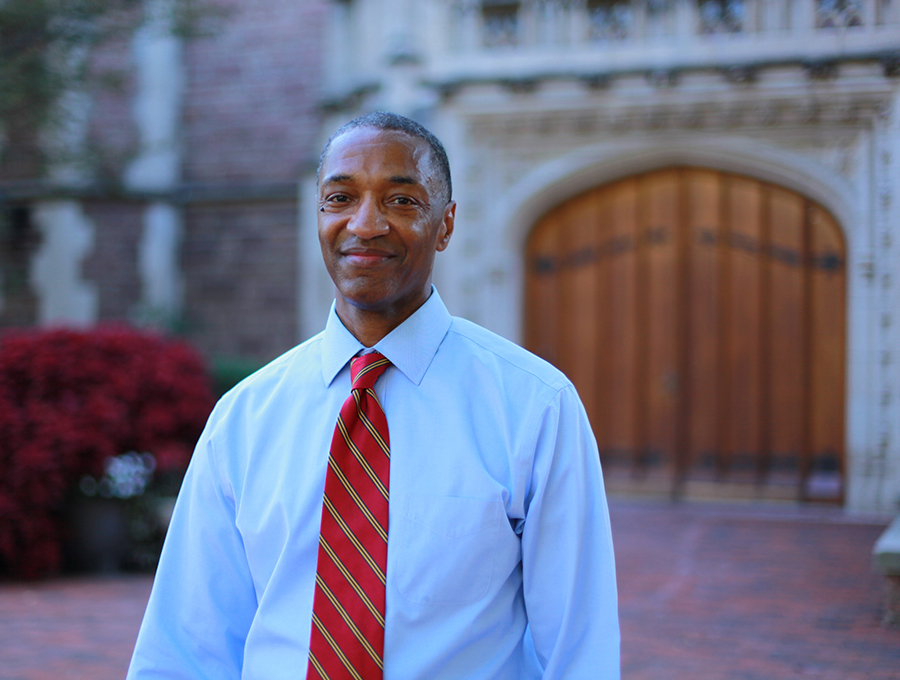The relationship between place, race and STEM degree attainment is the topic for the next Discover Science Lecture Series hosted by the College of Science. The college has invited well-known educator and author William Tate, a professor in arts and sciences at Washington University, St. Louis, to present his work to the community in this free and open to the public lecture Feb. 6 at 7 p.m.
After moving to Dallas where he started his professional career, Tate recognized a lack of student STEM workforce readiness, a big high school student dropout rate and students lacking preparation for college-level STEM courses. He decided to learn more and began exploring how place, race and STEM were related.
“I worried that students experiencing poverty and underrepresented racial groups lacked a pathway to participate in the accelerating STEM market and to experience upward mobility,” he said. “Regional economic goals, human capital development, and educational opportunity misaligned and social mobility narrowed for student groups in the local community.”
Tate's lecture, titled "Is Space + Race > STEM Opportunity?" is grounded on Tobler’s first law of geography: “Everything is related to everything else, but near things are more related than distant things.” His lecture describes the implications of this law for opportunity to learn in STEM (science, technology, engineering, and mathematics) education. Using geospatial methods, Tate illustrates the relationship between place and STEM attainment.
Tate has a particular interest in STEM attainment. Ongoing research projects include understanding the distal and social factors that predict STEM doctoral degree attainment, broadly defined to include highly quantitative social sciences disciplines (such as economics). His co-edited book, titled Beyond Stock Stories and Folktales: African Americans’ Paths to STEM Fields, captures the direction of this research program.
“I view STEM as a foundational aspect of the liberal arts,” Tate said. “I majored in economics as an undergraduate. My liberal arts advisor recommended that I minor in the mathematical sciences. It was great advice. I tutored calculus and economics as an undergraduate and served as an undergraduate mathematics teaching assistant."
Tate is the Edward Mallinckrodt Distinguished University Professor in Arts & Sciences at Washington University where he serves as Dean of the Graduate School and Vice Provost for Graduate Education.
In his lecture, Tate will offer examples of how to intervene, at scale, in communities. Typically, researchers don’t apply knowledge to the community, universities, or school programs; rather, we share and partner in a mutually informing fashion, he said.
“My colleagues and I engage in partnerships with the community in order to motivate community action and civic problem solving,” he said. “For example, I worked with a group of social scientists, biostatisticians and community medicine experts to eliminate African American health disparities in the St. Louis region. The work was exciting, challenging, and sobering.”
The lecture will hold interest for the community, the campus and even high school students, who have been the focus of his work.
“We do know a great deal about how to protect and to nurture the brain in communities,” Tate said. “In the end, my efforts focus on how population science informs our understanding of improving STEM attainment and upward mobility. Translating population science to portable solutions and implementation represents one of the great challenges of the democratic project.”
The lecture will be held in the Davidson Mathematics and Science Center.
The Lecture Series
Bringing the best and brightest minds in science to the University from around the United States to share their knowledge with the community to our community, the College of Science is in its tenth year of presenting the Discover Science Lecture Series are always free to the public. They are held at 7 p.m. in the Redfield Auditorium inside the Davidson Mathematics and Science Center at the University of Nevada, Reno.
Other speakers the College of Science is bringing to the community this year are: on March 12, Harry Jol, a Geoarchaelogist who uses ground penetrating radar in Holocaust studies at suspected locations of mass graves, destroyed synagogues, ritual bathhouses and other structures in Lithuania that have been lost to time; and on April 9 Harrison Schmitt, the last man on the moon, who is a retired NASA astronaut and geologist.
Past speakers in the series include astrophysicists Michio Kaku and Neil deGrasse Tyson; Robert Ballard, who discovered the wreck of the Titanic; and Bill Nye the Science Guy.
Free parking for the event is available in the lot south of the Davidson Mathematics and Science Center on the southeast corner of Evans Avenue and Record Street. For more information, call the College of Science at 775-784-4591 or visit the Discover Science Lecture Series website.












